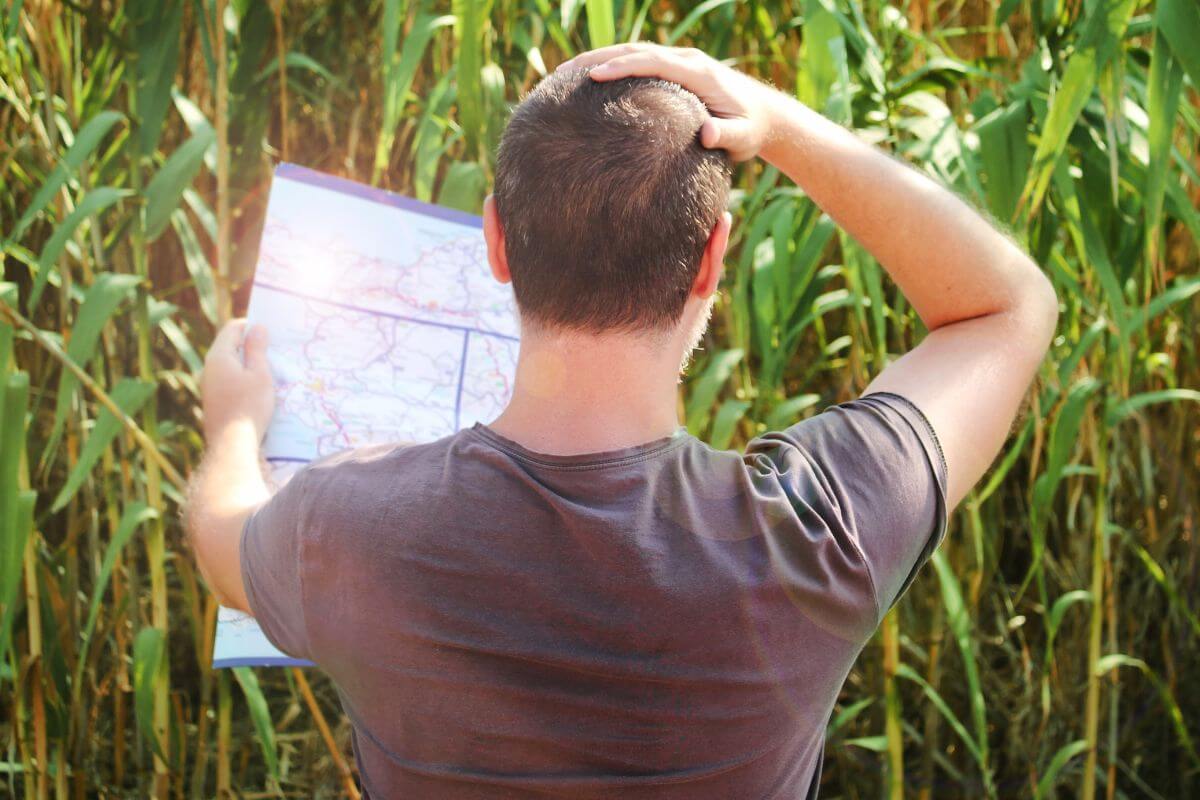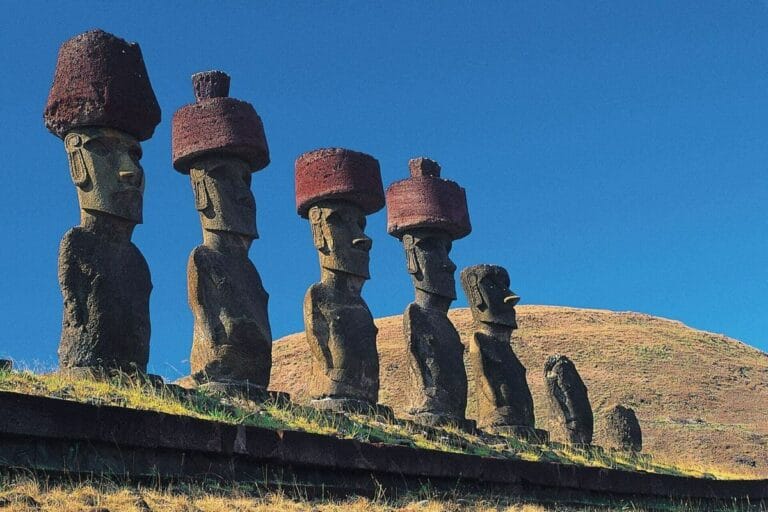How Not to Get Lost in a Foreign Country
Ah, the allure of foreign lands but how to not get lost in a foreign country is the question! The thrill of adventure, the beauty of new cultures, and the sheer joy of discovering new corners of the world. Yet, among all the wonders of travel, one thing is guaranteed: sooner or later, you’ll find yourself in a maze of unfamiliar streets, wondering which way is north and questioning why you even ventured out of your hotel in the first place. While getting lost can sometimes be a delightful journey, it’s best when done on purpose. Here’s how to avoid turning your dream vacation into a real-life game of hide and seek.
The difference between a fun-filled adventure and a frustrating, panic-inducing mishap often boils down to preparation and a positive mindset. The fear of getting lost in a foreign land is a universal one, often enhanced by linguistic barriers, cultural nuances, and foreign signs that might as well be ancient hieroglyphics. But fret not! By following a few simple guidelines, you can avoid transforming your exploration into a test of survival skills.
With the right mindset and a few practical tips, you can turn getting lost from a disaster into a delightful detour. Here’s your guide to staying grounded (and not completely lost) while traveling abroad.
Embrace Technology, But Don’t Depend on It
We all love our GPS devices and smartphones. They are like digital compasses that we rely on to guide us through the most intricate mazes of unfamiliar cities. But let’s not forget they sometimes lose signal faster than your phone loses battery on a day of Instagramming. Remember that time when my GPS insisted I was swimming across the Seine River in Paris? Clearly, it was suffering from a digital hangover. Digital maps, like Google Maps, are incredibly helpful, but they have limitations.
Technology is great until it isn’t. A digital map might lead you right into the heart of a neighborhood with no WiFi signal, leaving you more confused than ever. When technology fails, paper maps become invaluable—remember those? If you’re planning to go off-grid, download maps for offline use or grab a paper map from a tourist information center or your hotel. A trusty map won’t run out of battery, and they don’t rely on the kindness of strangers with free WiFi.
But make sure you know how to read it. The key is to familiarize yourself with the map and understand the lay of the land before venturing out. Google Maps won’t save you if you don’t know how to tell north from south. When technology and maps fall short, never underestimate the power of observation. Look for recognizable landmarks, main streets, or transportation hubs to regain your bearings.
Learn Basic Phrases (or at least “Help, I’m Lost!”) Before you get lost
The charm of visiting a new country often lies in its language and culture. Understanding basic phrases like “hello,” “thank you,” and “where’s the bathroom?” can be invaluable. But the most crucial phrase in any language? “Help, I’m lost!” My personal experience of yelling “Aiuto!” in an alleyway in Rome was priceless. The locals took pity on me and guided me back to the bustling main street. Spoiler alert: they laughed a lot at my Italian pronunciation, but hey, I got where I needed to go!
Communication is key, especially when you’re lost. Besides the essential phrases, it’s wise to know other useful expressions like “Where is the train station?” or “How much does this cost?” While learning a new language takes time, the effort pays off by making you more comfortable and helping you navigate with ease. Also, consider carrying a handy phrasebook or downloading a language app that works offline. It’s the best way to avoid awkward hand gestures that could get lost in translation.
When in doubt, hand gestures and facial expressions go a long way in bridging language gaps. They say laughter is a universal language, so don’t be afraid to use it when interacting with the locals. Most people appreciate the effort and are often willing to help a traveler in distress.
Know Where You’re Staying
You’d think this one would be obvious, but it’s surprisingly easy to forget your hotel name, especially after several drinks or a full day of sightseeing. I once wandered around Vienna asking for directions to a “hotel with a big chandelier.” Turns out, there are a lot of chandeliers in Vienna. Hotels and hostels can be hard to remember after a long day out, especially if they have generic names or there are multiple branches.
Keep a card with the hotel’s name and address with you, or better yet, take a picture. Bonus points if the picture includes a helpful nearby landmark, like a giant neon sign or a quirky statue. This visual aid can save you when words fail you, and even if you lose your voice from singing karaoke in a bar the night before.
It also helps to memorize the nearest metro station or major landmark to your accommodation. This way, even if you can’t recall the exact address, a taxi driver or a local might be able to point you in the right direction based on nearby reference points.
Blend in, But Stand Out
The art of blending in while traveling is to not stick out like a sore thumb, unless you need to get help. My friend, an expert at this, loves to dress in nondescript clothes that fit in with the locals. However, he also carries a hilariously bright yellow umbrella that makes him instantly recognizable from a distance. When you’re lost in a crowd, your party can spot you from miles away, thanks to that beacon of safety.
When traveling in unfamiliar territories, it’s advisable to dress like a local to avoid being an easy target for scammers and pickpockets. But it’s equally essential to carry something that sets you apart and makes it easier for your group to find you. Whether it’s a neon jacket or a colorful hat, make sure your travel buddies can spot you in a crowded place.
In crowded tourist spots or events, make a plan beforehand to regroup in case anyone gets separated. This way, everyone knows exactly where to go and there’s no need to wander aimlessly.
Get Friendly with the Locals
Locals are the unsung heroes of any lost traveler’s story. They often know the shortcuts, the landmarks, and the right bus lines. Plus, they can sometimes provide a fresh perspective on where you are—and where you should be. I once spent 20 minutes in Mexico City conversing with a street vendor using only hand gestures. I ended up with a delicious taco, a new friend, and perfect directions to the Museo Frida Kahlo.
Building rapport with locals not only helps you navigate but can also lead to delightful interactions that enrich your travel experience. People are usually willing to assist when they see a friendly face, so don’t hesitate to ask for help. Moreover, locals can provide recommendations on hidden gems and lesser-known routes that might not be on your itinerary.
To make the most of local knowledge, it’s helpful to learn about cultural customs and greetings before you go. This way, you’ll know how to approach people respectfully and in a manner they’re accustomed to, which increases your chances of getting assistance.
Don’t Panic, Enjoy the Detour
Sometimes, getting lost can lead to the most memorable experiences. When I wandered off the beaten path in Kyoto, I stumbled upon a quiet bamboo forest that was more enchanting than any planned tourist spot. My advice: when you realize you’ve lost your way, don’t panic. Take a deep breath, maybe enjoy a cup of tea at the nearest café, and calmly figure out your next steps.
Getting lost is an inevitable part of travel, and it’s best to embrace it as an opportunity to discover new places and people. The unexpected can bring surprises that enrich your journey. Whether it’s a hidden café, a local festival, or a picturesque alleyway, sometimes the best travel stories begin with “We got lost…”
In moments of uncertainty, maintaining a positive attitude can make all the difference. Remember that most places have locals or authorities who can help you find your way back to familiar ground.
Use Landmarks, Not Street Names
Street names can be tricky in foreign countries due to the language barrier or just because they don’t always make sense. Instead, use landmarks as navigation tools. “The big church near the park” is much more identifiable than “Główna Street.” In Barcelona, navigating by Gaudi’s iconic buildings kept me on track—until I mistook Casa Batlló for Casa Milà and ended up wandering in circles!
It’s wise to familiarize yourself with the main landmarks and how they connect to your desired destinations. This way, you can navigate confidently using visual cues rather than relying solely on street signs. Major tourist attractions, government buildings, or even famous cafes can serve as navigation anchors that guide you.
Additionally, make note of visual details like building colors or unique architectural features that can help you retrace your steps if you get lost. They can be the breadcrumbs that lead you back home.
In summary, staying grounded (pun intended) while navigating unfamiliar streets involves a mix of preparation and embracing the unexpected. By being resourceful, friendly, and a little adventurous, you can turn any misstep into a happy accident. After all, isn’t getting a bit lost the essence of travel? Safe travels, and may you never lose your way… for too long!







